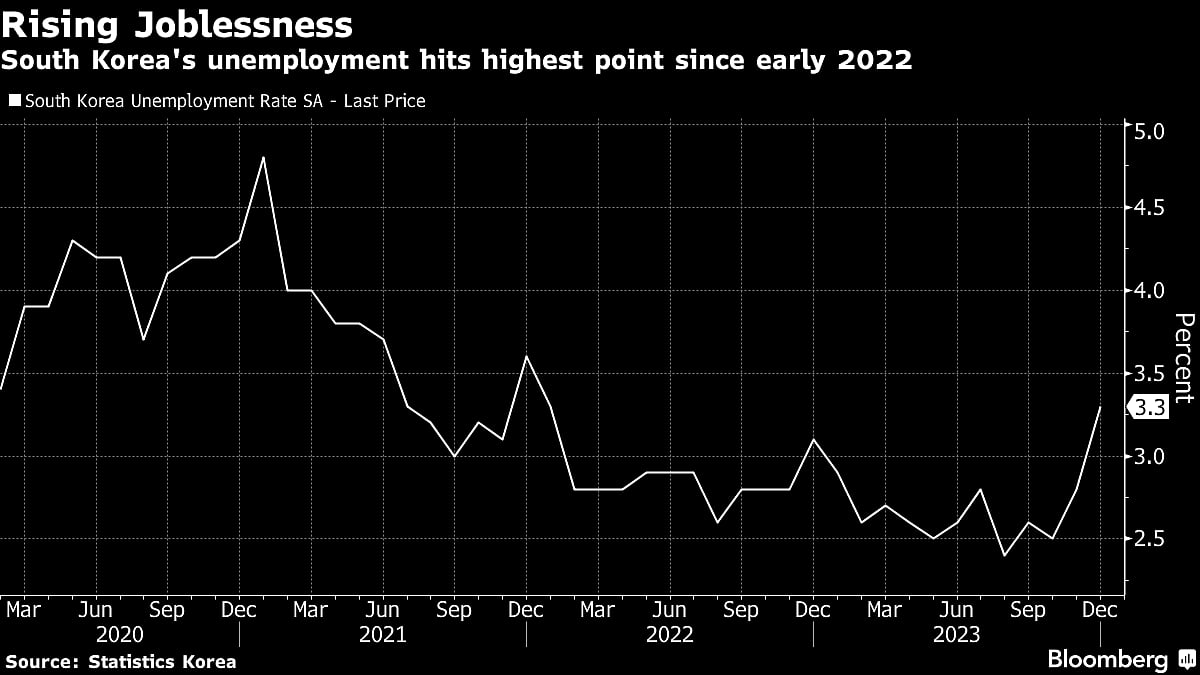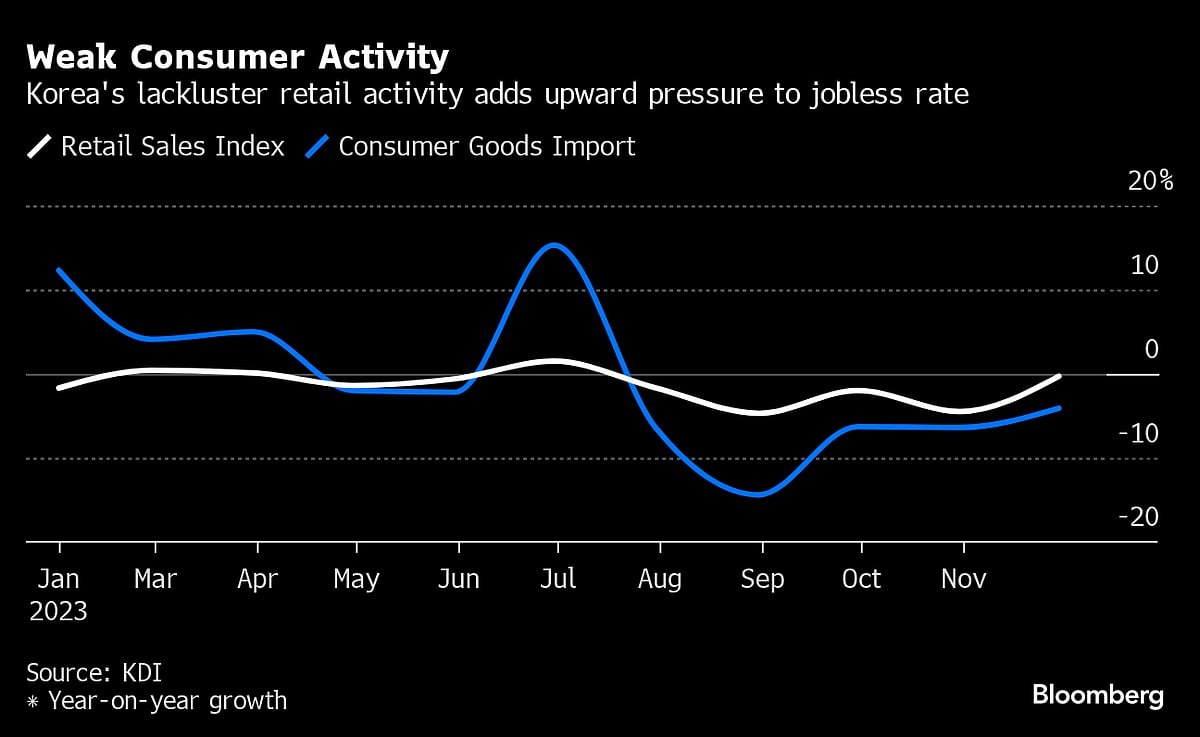South Korea Joblessness Hits Two-Year High As Labor Force Grows
The reading comes a day before the central bank is widely expected to keep borrowing costs at the highest level in more than 15 years.

(Bloomberg) -- South Korea’s jobless rate rose to the highest in almost two years, a reflection of both the impact of elevated interest rates on the economy and the impact of more people joining the workforce.
The seasonally adjusted unemployment rate rose to 3.3% in December from 2.8% a month earlier, the statistics office said Wednesday. Economists surveyed by Bloomberg had forecast the figure to edge up by just 0.1 percentage point.
The reading comes a day before the central bank is widely expected to keep borrowing costs at the highest level in more than 15 years.

While the jump in the jobless rate offers a warning sign that companies may be feeling the strain of economic conditions affected by the high borrowing costs, a rise in the labor participation rate offers a more positive signal that people are joining or returning to the labor market in search of work.
That’s likely to support the Bank of Korea’s view that the economy can sustain continued tightness in interest rates even amid signs of financial difficulties in the property development sector.
Read More: Bank of Korea to Keep Policy Restrictive for Now: Decision Guide
What Bloomberg Economics Says...
“The sharp increase was largely driven by higher labor participation rather than a decrease in jobs. This means the labor market hasn’t deteriorated as much as the top-line figure might suggest.”
— Hyosung Kwon, economist
For the full report, click here
The central bank remains reluctant to ease its policy yet as household debt remains elevated while exports recover, and is seen holding its benchmark rate at 3.5% when the board meets on Thursday.
Concerns that elevated interest rates may rekindle problems in the property sector have been reignited by Taeyoung Engineering & Construction’s recent request to restructure its debts.
Read More: Korea Firm Behind Debt Scare May Pledge TV Stake to Creditors
The jobs report showed that the labor participation rate rose 0.3 percentage point to 64.6% in December. In another sign that the labor market may be showing more resilience than suggested by the headline figure the report showed 285,000 jobs were added from a year earlier last month, compared with an increase of 277,000 in November.

The gains were still below last year’s peak of 346,000 positions created in October. The finance ministry expects jobs growth to moderate this year by almost a third compared with last year.
“Domestic demand has struggled with high interest rates, inflation, and consumer pessimism keeping pressure on the retail and service industries,” said Shannon Nicoll, an associate economist at Moody’s Analytics. He attributed the rise in unemployment to strong labor-force growth rather than job losses.
More stories like this are available on bloomberg.com
©2024 Bloomberg L.P.